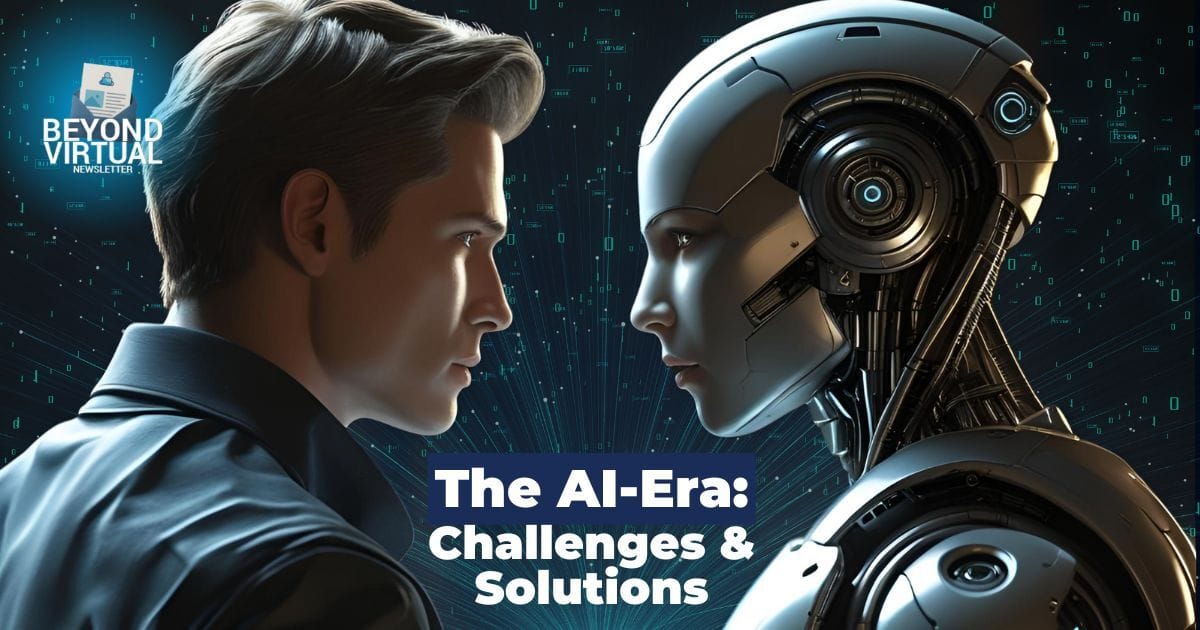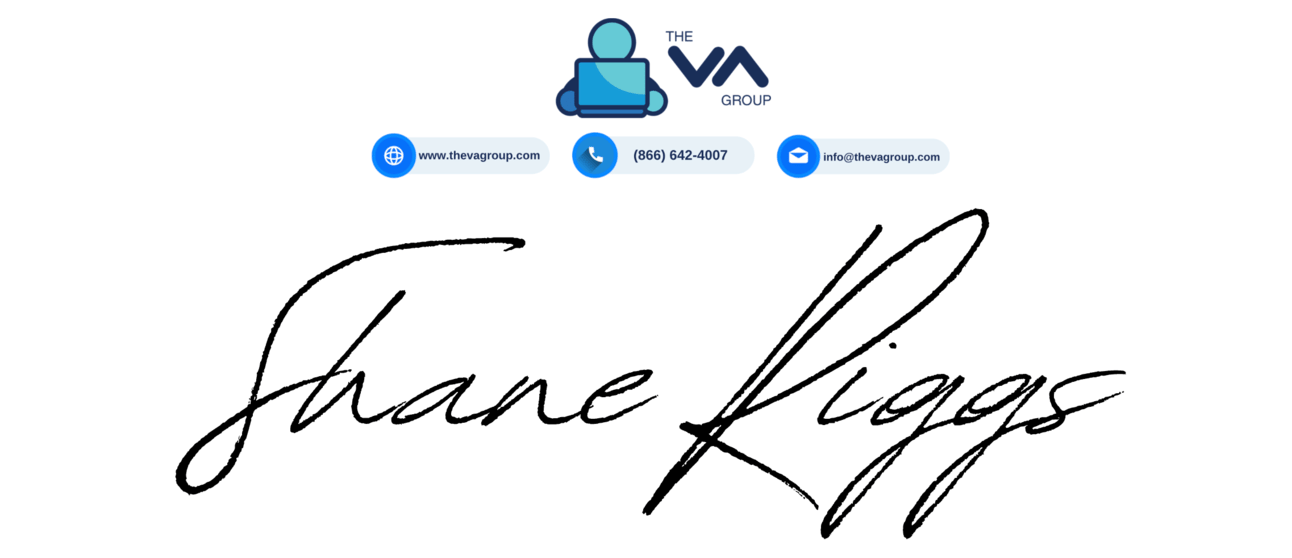- The VA Group
- Posts
- Common Challenges & Solutions We Face in this AI-Era
Common Challenges & Solutions We Face in this AI-Era
What Six Years of AI Integration Actually Taught Me

BEYOND VIRTUAL
AI’s biggest hurdle wasn’t what we thought it was. I didn't expect when we started adding AI to our VA services. The hardest part wasn't the technology.
It was the people. Including me, honestly.
You know how it goes with new tech. Everything looks amazing in the demos, and the case studies trigger your fear of missing out (FOMO). I remember watching one presentation about AI assistants and thinking, "This is it. This changes everything."
Then we actually tried to use it.
Some of our VAs spent more time trying to figure out the tools than actually getting work done. Clients started questioning every single output, even the good ones. And I'll admit, there were moments when I wondered if we'd made a huge mistake. But we stood our ground, because in my vision, AI is the future.
But here's what I learned after working with maybe fifty different businesses over the past couple of years. These problems? They're not unique to us. Pretty much everyone hits the same walls.
The good news is, these challenges have real solutions. Not perfect ones, but real ones that actually work.
Feature Story
WHY THE SLOW AND STEADY APPROACH WINS
I've been following Andrew Ng for years now. If you don't know him, he's basically the guy who teaches AI to everyone, from complete beginners to the elite companies.
While other experts talk about the AI revolution and overnight transformation, he talks about practical steps. His 2024 insights hit home because they address exactly what we've been dealing with:
The Biggest AI Problems (and Their Surprising Solutions)
Problem: AI tools cost too much for smaller businesses.
In reality? Not anymore. The prices have dropped, and models that used to cost thousands now cost hundreds. Some even less!
Ng's take: They're becoming the standard, not some fancy add-on. The tools are getting simpler.
This one surprised me. We tried setting up another AI agent for lead qualification last month. Expected it to take weeks. Had it working in three days. Not perfectly, but working.
Problem: Creating video content still takes forever.
Solution: AI video tools are getting scary good. I mean, really good.
We had a client who needed product demo videos. It used to take our VA two days per video. Now? Maybe two hours give or take. The AI handles the heavy lifting, the VA adds the human touch.
Problem: The big AI models need too much computer power.
Ng's insight: Smaller, specialized models work just as well for specific tasks.
This is probably the most practical advice. You don't need the biggest, most expensive AI for everything. Sometimes the smaller one works better because it's trained for exactly what you need.
Problem: Building AI capabilities seems impossible without a tech team.
Reality: Partnerships and ready-made solutions are everywhere now.
Think about it like this—you don't build your own email system, right? Same with AI. Use what's already been built.
"Most companies try to do everything at once. Start small, learn what works, then do more."
That's exactly what worked for us. One tool. Master it. Then add the next one.
Visionary Voices
DR. FEI-FEI LI: THE HUMAN SIDE OF THE AI STORY
Dr. Fei-Fei Li from Stanford recently made me rethink everything about AI integration. Her words? Most AI failures aren't about the tech's smarts, but because no one considers how humans will actually use it!
This has never been more true. I started replaying all those times our VAs wrestled with new AI tools, and it wasn't the AI's "brainpower" that was the problem. It was the disconnect between what the tool assumed they'd do and how our VAs actually work.
Li's research shows that successful AI implementations treat AI as a thinking partner, not a replacement. This makes so much sense when you see it in action.
Our most successful clients? Their VAs use AI to handle the boring stuff—research, data processing, and first drafts. Then they apply their experience, creativity, and relationship skills to make it seamless and really useful.
I’ve also had clients who struggled and tried to automate everything, removing human judgment. The result? Lost trust, dropped quality, frustrated VAs. I've seen this pattern countless times now; trust me, it’s bad.
Li's approach solves our biggest headaches:
When VAs see AI as ‘help’, they want to use it.
When humans stay in the loop, quality stays high.
When tools are human-designed, training gets easier.
"The future belongs to those who can blend human and artificial intelligence seamlessly."
I think she's right. This perfectly describes what we're building with AI-powered VAs. Not robots, but enhanced humans.
The Trend
TOOLS THAT ACTUALLY WORK (Based on Real Experience)

m3gan on Giphy
After trying probably a hundred different AI tools, here's what we've learned: most are okay, some are terrible, but a few are genuinely helpful. These solve real problems without creating new ones:
For Research Overload:
Perplexity AI is a game-changer. It summarizes results with sources, cutting research time by about 70%. It's not perfect, but it's a huge time-saver.
ChatGPT and Claude excel at processing client briefs, pulling out key points so your VA misses nothing. (Still double-check for complex projects!)
For Messy Communication:
Grammarly Business goes beyond mistakes, ensuring consistent tone, and is more crucial than you'd think.
Copy.ai and Jasper maintain brand voice via templates, saving significant back-and-forth.
For Time-Sink Meetings:
Otter.ai transcribes meetings and extracts action items automatically. A game-changer for VAs.
Calendly offers smart scheduling, perfectly handling preferences and time zones, eliminating endless emails.
For Data Entry Drudgery:
Zapier connects systems without coding, automating recurring tasks that add up.
Make (formerly Integromat) handles more complex workflows, worth the setup for repetitive processes.
For Reporting Bottlenecks:
Tableau AI and Power BI Copilot generate insights automatically, letting VAs create professional reports in minutes.
Our Winning AI Approach:
After 50+ implementations, here’s our strategy:
Month 1: Pick one tool. Train thoroughly. Measure its impact.
Month 2: Fix issues. Document successes. Get comfortable.
Month 3: Add a second tool, ensuring it integrates well.
Month 4: Scale what works. Train more team members.
Need more AI tools at your disposal? Check out “There’s an AI for that”
A Final Note
WHAT THIS MEANS FOR US (AND WHAT’S COMING NEXT)
The biggest challenges with AI aren't technical. They're human input. But that's also why the solutions work; when you solve for humans first, the technology follows.
The companies doing well aren't the ones with the most AI. They're the ones with the best partnerships between people and AI.
Your VA enhanced by AI can handle problems that neither humans nor AI can solve alone. That's where the real value is.
Next issue, we're diving into something I get asked about constantly: "How are you measuring ROIs with your co-pilot model?" Because the most important results don't always show up in spreadsheets, but you still need to prove value.
Until next time,
Shane

Sources:
